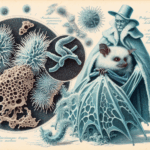Liam Fedus, OpenAI’s VP of research for post-training, is making a dramatic exit. His next mission? Launching an AI-driven materials science startup, because wrangling language models apparently wasn’t ambitious enough.
The Information broke the news first, and Fedus confirmed it on X, because where else do tech executives go to drop cryptic career updates? He explained that his physics background was calling him home, and that AI-for-science is critical to OpenAI’s long-term goal of achieving artificial superintelligence—because obviously, we need god-tier AI designing new materials before we even understand the old ones.
OpenAI isn’t cutting him loose entirely. They’re planning to invest in and collaborate with his new venture, meaning Fedus won’t be vanishing into the startup void alone. Instead, he’ll be battling it out with Google DeepMind, Microsoft, and a handful of other players racing to make AI-powered material discovery a thing.
This field isn’t just theoretical. DeepMind’s AI, Gnome (yes, that’s its real name), allegedly discovered millions of potential new crystalline materials back in 2023. Microsoft, not to be left out, recently unleashed MatterGen and MatterSim—AI tools promising to shake up material discovery. Because if there’s one thing tech giants love, it’s slapping “Gen” or “Sim” onto a product and calling it revolutionary.
Not everyone is impressed. Some researchers argue that AI isn’t quite ready to be a co-scientist, let alone an alchemist. They point out that while machine learning models can predict structures and patterns, true scientific breakthroughs still require, well… scientists. The jury’s still out on whether AI will reshape materials science or just generate a lot of fancy simulations that never leave the lab.
But Fedus is betting big. And with OpenAI backing him, this isn’t just another startup—it’s a calculated move to push AI deeper into the physical world. If he succeeds, AI won’t just be writing essays and generating images. It’ll be designing the very materials that shape the future.
Did You Know?
- The strongest known material isn’t diamond or graphene—it’s something called “nuclear pasta,” a theoretical substance found in neutron stars that’s 10 billion times stronger than steel.
- Earth’s most expensive material is antimatter, costing around $62 trillion per gram. Good luck crowdfunding that experiment.
- Scientists have already experimented with AI to create self-healing materials—because what could go wrong with substances that can repair themselves without human intervention?





